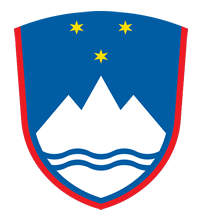Slovenia: Government
Key Figures
- Chief of State:
- President Natasa Pirc Musar
- Head of Government:
- Prime Minister Robert Golob
Overview
- Government Name:
- Republic of Slovenia
- Constitution:
- Adopted: 1991; As the fundamental law of Slovenia, this constitution covers Human Rights and Fundamental Freedoms, Economic and Social Relations, Organisation of the State, Self-Government, Public Finance, Constitutionality and Legality, The Constitutional Court, and the Procedure for Amending the Constitution.
- Government Type:
- Parliamentary Republic

Index of Economic Freedom
Country Risk Rating
Government Branches
| Main Powers | Election Process | Election Cycle 1 | |
|---|---|---|---|
| Executive | Proclaims laws adopted by the National Assembly, proclaims documents of ratification for international treaties, and performs other duties defined by the constitution. |
President is elected by majority vote through a two-round system and prime minister is elected by parliament. |
5 years |
| Judicial | Highest authority of judicial power for the protection of constitutionality, legality, human rights and fundamental freedoms. |
Elected by the National Assembly from proposals submitted by the president, attorneys, law universities, and sitting judges. |
Until dismissal by executive branch |
| Legislative | Represents the interests of socio-economic and professional circles and those of local authorities, gives opinions on draft legislation examined by the National Assembly, initiates debates on bills before they are promulgated, and forwards requests to parliamentary commissions to launch inquiries. |
National Council (Državni Svet) members are indirectly elected by an electoral college, and in the National Assembly (Državni Zbor), 88 members are elected through an open-list proportional representation system and 2 members are elected through a Borda Count system. |
National Council: 5 years; National Assembly: 4 years. |
Regional Trade Blocs
International Organization Participation [2]
Environmental Agreements [3]
Tax Information [2]
- Tax Authority:
- Ministry of Finance
- Tax Name:
- VAT
Sources:
- ElectionGuide http://www.electionguide.org/
- EY, http://www.ey.com
- CIA World Factbook, https://www.cia.gov/the-world-factbook/
- U.S. Bilateral Relations Fact Sheets http://www.state.gov/r/pa/ei/bgn/


